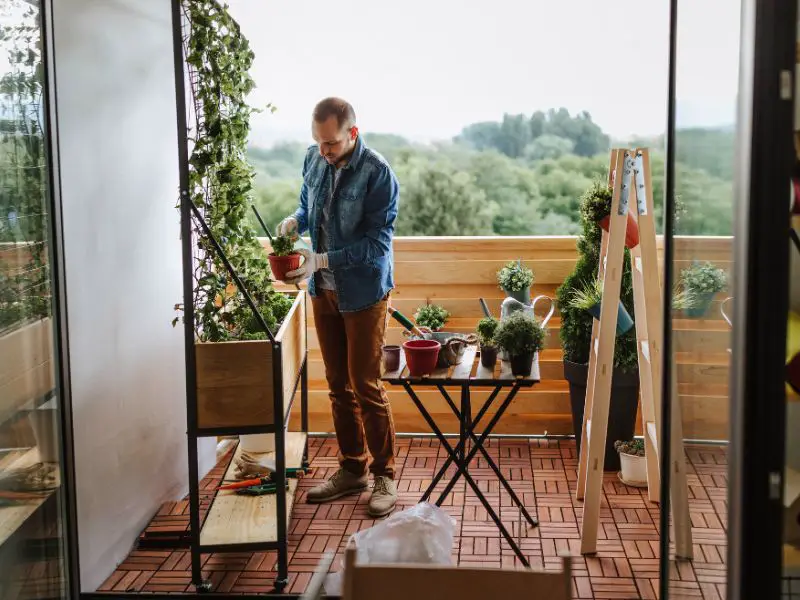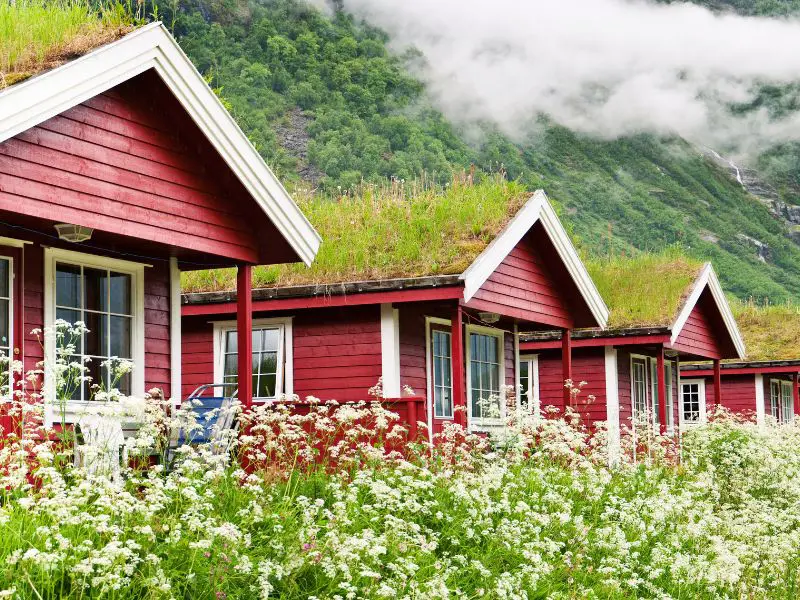Gardening in the city is a growing trend that has gained popularity in recent years. With more and more people moving to urban areas, the need for green spaces has become increasingly important. Urban gardening offers a solution to this problem by allowing individuals to grow their own fruits, vegetables, and plants in small spaces.
City gardening can take many forms, from rooftop gardens to community plots. One of the biggest benefits of urban gardening is the ability to grow fresh produce in a sustainable and environmentally friendly way. By using organic methods and composting, city gardeners can reduce their carbon footprint and contribute to a healthier planet.
Despite the challenges of limited space and potential pests, urban gardening can be a fun and rewarding hobby. Whether you are a seasoned gardener or just starting out, there are many resources available to help you get started. From online forums to local gardening clubs, there are plenty of ways to connect with other city gardeners and learn new techniques.
Benefits of Gardening in the City
Gardening in the city is a rewarding and fulfilling activity that offers numerous benefits to both individuals and the community as a whole. From providing fresh produce to improving air quality and promoting mental health, urban gardening has a lot to offer.
1. Providing Fresh Produce
One of the most significant benefits of urban gardening is the ability to grow fresh produce right in the city. With limited access to fresh fruits and vegetables in many urban areas, gardening can help supplement diets with nutrient-rich foods. Additionally, growing one’s produce can be cost-effective, reducing the need to purchase expensive produce from grocery stores.
2. Improving Air Quality
Urban gardening can also help improve air quality in cities. Plants absorb carbon dioxide and release oxygen, helping to reduce pollution and improve air quality. Moreover, gardens and green spaces can help reduce the urban heat island effect, where cities tend to be hotter than surrounding areas due to the concentration of buildings and pavement.
3. Promoting Mental Health
Gardening in the city can also have significant mental health benefits. Spending time outdoors and engaging in physical activity can help reduce stress and anxiety. Additionally, gardening can provide a sense of accomplishment and purpose, which can improve overall well-being. Furthermore, community gardens offer opportunities for social interaction and can help build a sense of community.
In summary, urban gardening offers numerous benefits, including providing fresh produce, improving air quality, and promoting mental health. By engaging in this activity, individuals can make a positive impact on their health and the environment while also contributing to their community.
Types of Urban Gardens
Urban gardening is a practice that allows city dwellers to grow plants in a limited space. There are different types of urban gardens that people can cultivate depending on the available space, resources, and interests.
1. Window Boxes and Balcony Gardens
For those living in apartments or small homes, window boxes and balcony gardens are ideal options. Window boxes are small containers that can be attached to windowsills, while balcony gardens involve growing plants in pots on a balcony. These types of gardens are perfect for growing herbs, vegetables, and flowers. They require minimal space and can be easily maintained.

2. Community Gardens
Community gardens are public spaces where people can come together to grow plants. These gardens are usually located in parks or other public areas and are managed by the community. People can rent a plot of land to grow their own plants or work together to grow a communal garden. Community gardens provide a great opportunity for people to connect with nature and with their neighbors.

3. Green Roofs and Walls
Green roofs and walls involve growing plants on the roofs or walls of buildings. These types of gardens are gaining popularity in urban areas because they provide numerous benefits. They help to reduce the heat island effect, improve air quality, and provide insulation to buildings. Green roofs and walls can be used to grow a variety of plants, from herbs and vegetables to flowers and shrubs.

There are different types of urban gardens that people can cultivate depending on their interests and available resources. Window boxes and balcony gardens are perfect for those living in apartments, while community gardens provide an opportunity for people to connect with nature and their community. Green roofs and walls provide numerous benefits to buildings and the environment.
Don’t let living in the city stop you from having a green thumb! This guide will show you how to create a thriving urban garden that will make your concrete jungle feel like a lush oasis.
Choosing Plants for Urban Gardening
When it comes to urban gardening, choosing the right plants is crucial to success. Here are some considerations to keep in mind when selecting plants for small spaces:
Considerations for Small Spaces
One of the biggest challenges of urban gardening is limited space. When choosing plants, look for those that are compact or can be grown vertically. This will help maximize your growing area. Additionally, consider the amount of sunlight your space receives and choose plants accordingly. Plants that require full sun may not be suitable for a shaded balcony or patio.
Low-Maintenance Plants
Another important factor to consider when selecting plants for urban gardening is maintenance. Look for plants that are low-maintenance and require minimal watering and pruning. Succulents, herbs, and small shrubs are great options for those who want to enjoy the benefits of gardening without the added work.
Edible Plants for Urban Gardening
For those who want to grow their own food, there are plenty of edible plants that are well-suited for urban gardening. Vegetables like tomatoes, peppers, and lettuce can be grown in containers or raised beds, while herbs like basil, mint, and parsley can be grown in small pots. Fruit trees like dwarf citrus or apple trees can also be grown in containers, making them a great option for small spaces.

Tips for Successful City Gardening
City gardening can be a rewarding and enjoyable experience, but it can also be challenging. With limited space, sunlight, and water, it can be difficult to maintain a healthy and thriving garden. Here are some tips to help ensure success:
Maximizing Sunlight
One of the biggest challenges of city gardening is the lack of sunlight. Buildings and other structures can block the sun’s rays, making it difficult for plants to grow. To maximize sunlight:
- Choose plants that can tolerate low light conditions
- Place plants near windows or on balconies that receive the most sunlight
- Use reflective surfaces, such as mirrors or white walls, to bounce light back onto plants
- Consider using grow lights to supplement natural light
Watering and Drainage
Another challenge of city gardening is ensuring plants receive enough water while also ensuring proper drainage. To prevent water from pooling and causing root rot:
- Choose containers with drainage holes
- Use a well-draining soil mix
- Water plants deeply but infrequently
- Consider using self-watering containers or a drip irrigation system
Dealing with Pests and Pollutants
City gardens are often exposed to pollutants and pests, such as air pollution, chemical runoff, and rodents. To protect plants from these hazards:
- Choose plants that are tolerant of pollution and pests
- Use natural pest control methods, such as companion planting, neem oil, or diatomaceous earth
- Consider using raised beds or containers to prevent chemical runoff from contaminating soil
- Regularly clean and inspect plants for signs of pests and disease
Bottomline
Gardening in the city is not only possible but also highly rewarding. By following the steps outlined in this article, anyone can create a thriving garden in their urban space. From choosing the right plants for the climate to preparing the soil, planting, watering, fertilizing, and protecting the garden from pests, each step is crucial for a successful garden.
Urban gardening is not only beneficial for the environment but also for personal health and well-being. Working on a garden is a great form of exercise that can help reduce stress and anxiety. It is also a great way to connect with nature and enjoy the beauty of plants and flowers.
Community gardens are also a great way to bring people together and promote social interaction. They provide a space for people to work together, share knowledge, and build relationships. Community gardens can also help promote food security by providing fresh produce to people who may not have access to it otherwise.
Overall, gardening in the city is a wonderful way to connect with nature, promote sustainability, and build a sense of community. With a little bit of planning and effort, anyone can create a beautiful and productive garden in their urban space.

